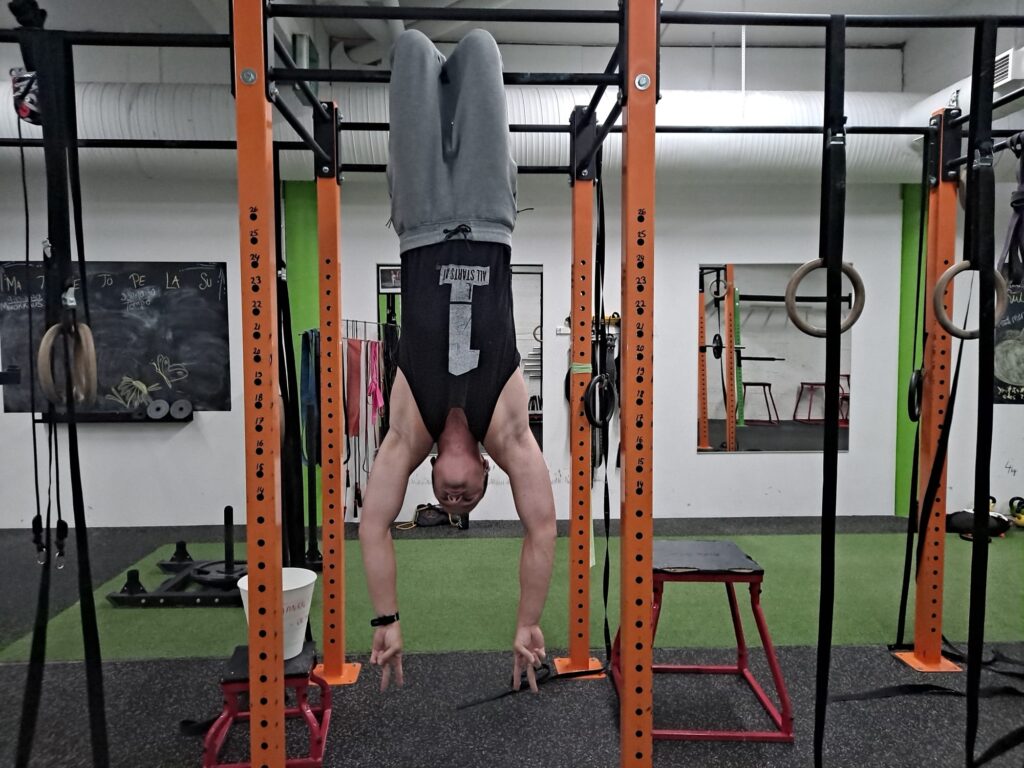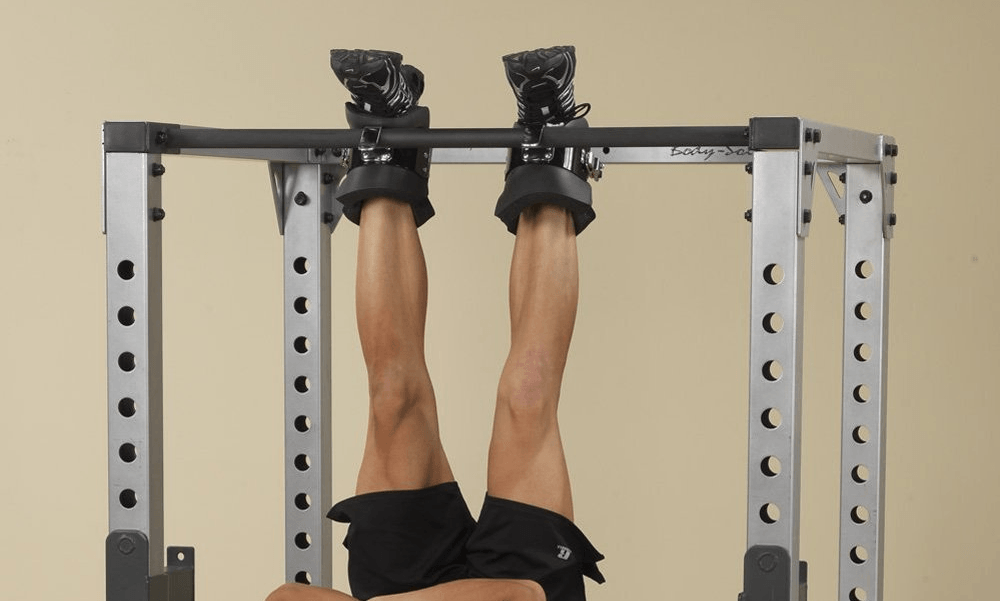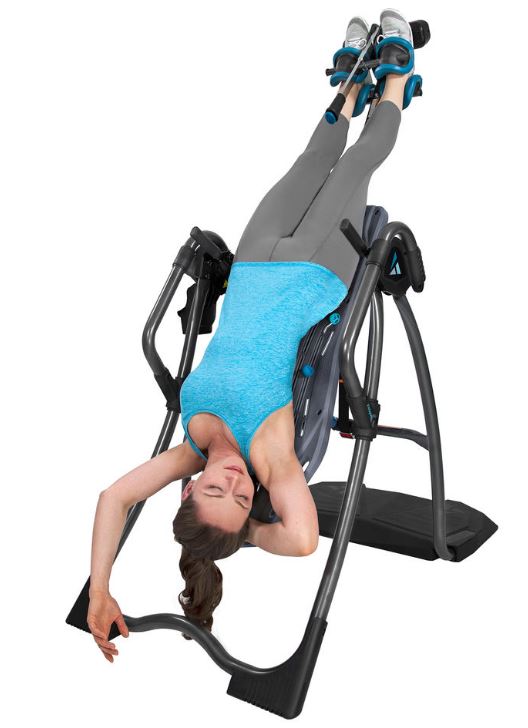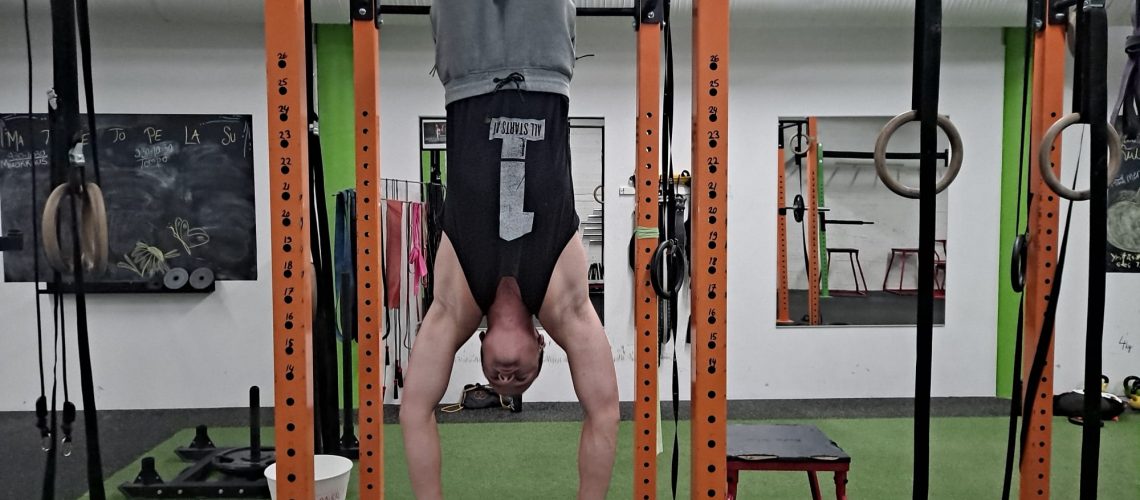This summer, I had some on-off pain in my upper back. Somedays, I felt pain even when breathing.
One day, I was in the outdoor gym, lightly stretching. I wasn’t in shape to do a proper workout.
Out of nowhere, I felt this urge to hang upside down. Like my body tried to tell me that it’s good for you and it will heal your back.
Although I have hanged upside down in rings and bars by using arms and back, I have never done it where my back, neck, and arms are totally relaxed. Surprisingly, few days of hanging upside down healed my back; pain disappeared totally!
Table of Contents
1. Scientific literature on hanging upside down
Let’s start with the basics; Inversion is the official term when we are talking about the act of hanging upside down.
The history of inversion is interesting. It is first known as an ancient technique (3000 BC) to relieve pressure, improve blood circulation and stimulate the brain. This information is based on drawings discovered by Archaeologists. It was done in Yoga form without outside help or devices. [1]
Legendary Hippocrates in ancient Greek (300 BC) took it to another level. He used a ladder and ropes to tie patients from their feet and let gravity do the magic. [1]

As it used for many millenniums by different cultures, there might be something special about it.
1.1 Benefits of inversion therapy
The first scientific study that caught my attention was published in the respected journal disability and rehabilitation. It seems that inversion therapy with physiotherapy was far superior compared to physiotherapy alone for patients with serious lower back pain. [2]
In this study, inversion therapy meant using an inversion table (more about inversion tables later).
An old study (also a journal with a good impact factor) from 1978 concluded that inversion therapy increases the spinal length and reduces EMG activity of the superficial lumbar area [3]. Reduced EMG activity means relaxed muscles [4].
Again old study from 1964 investigated 175 patients that were unable to work due to back pain. [5]
There are few things that need to be taken into consideration with inversion therapy.
One study experimented with the effects of inversion therapy on blood pressure; 60 females aged 20 to 30 were assigned randomly to an experimental or control group. Findings state that both systolic and diastolic blood pressure increased significantly. People with high blood pressure should not do inversion therapy. [8]
Inversion therapy also puts pressure on the eyes which is a problem if you have glaucoma. [9]
2. Different ways to do inversion therapy
There are many different ways to do inversion therapy, let’s go them through one by one.
2.1 Pull up bar inversion
All you need is a pull-up bar (or even a dip bar).

Pros
- Price (Free)
- If you have strength and courage, it’s very fast and convenient to do.
Cons
- Requires strength and courage to get in the position, which can be scary the first time.
- You cannot completely relax because leg muscles are used.
2.2 Gravity boots
With gravity boots, you can be completely relaxed while hanging upside down.

Pros
- Complete freedom (no need to use muscles)
- Easy to carry with you (weights only around 2 lbs / 0,9kg per item)
Cons
- The most expensive will be over 100 dollars, but there are also gravity boots for 50 dollars.
- Even with gravity boots, it can be scary to get in the position
2.3 Gravity table
Then there’s the gravity table which is used in most of the inversion therapy studies.

Pros
- Most user-friendly way to practice inversion therapy
- Different angles can be used
Cons
- Expensive
- Requires space
Prices vary from a few hundred dollars to over a thousand dollars. I could imagine using this when I’m too old to climb the top of the pull-up bar.
3. Inversion therapy routine
I like to do inversion therapy straight in the morning or after a workout. Even 10 seconds of hanging can do wonders [10]
I usually do 10 seconds to 20 seconds, 3 rounds. Sometimes my back cracks during hanging, and that is instant relief!
4. Notable people using inversion therapy
5. Ending words
My back got better with inversion therapy; It’s hard to say was it really because of hanging upside down, but science is there for it. Its been used since ancient civilizations, and it is still a popular tool among high performers like Tony Robbins and Joe Rogan.
It can be a free and time-efficient tool to corporate into a daily regimen like the best biohacks should be.

